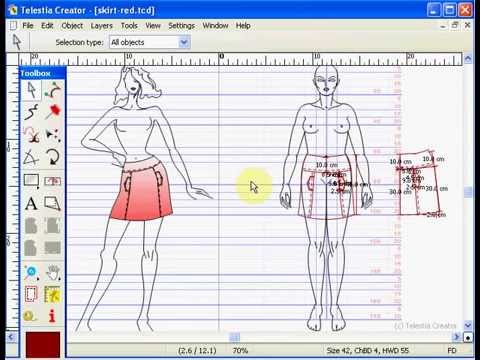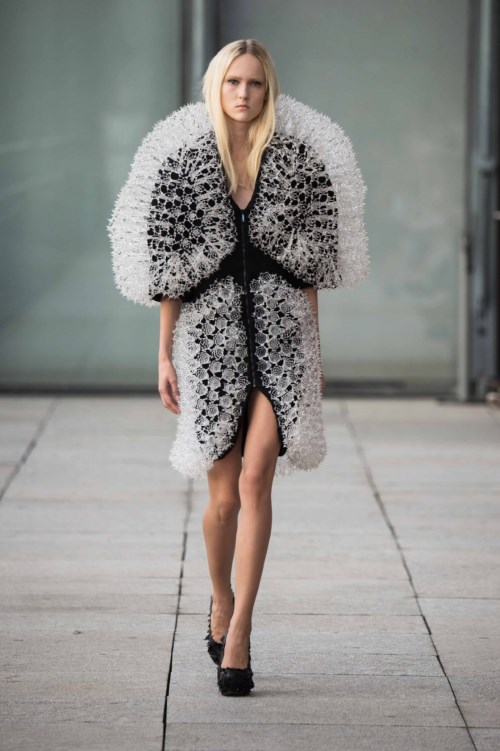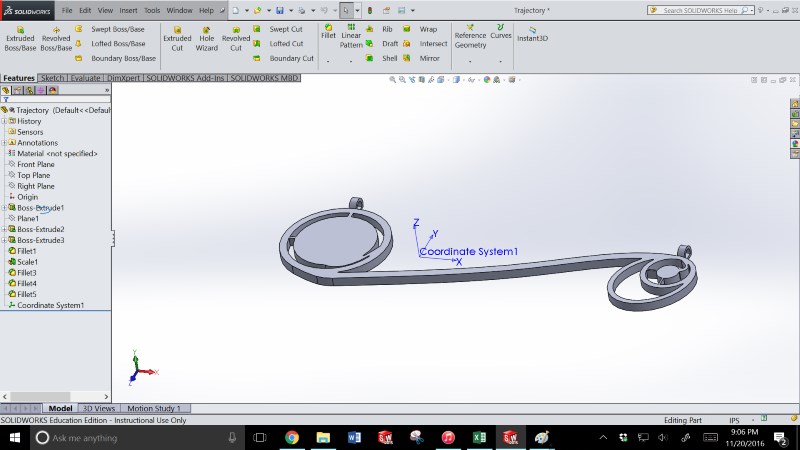Too often, we tend to think of CAD as having primarily industrial applications. However, it’s important to remember that CAD refers to a broad range of design programs, encompassing a number of creative fields as well as the AEC sector. One such field is the fashion industry, which has keenly felt the impact of the rise of CAD over the last few decades.
Now, we’re seeing the link between fashion and CAD growing stronger than ever. Knowledge of major CAD programs has become an essential tool for many fashion designers, and the use of new design and manufacturing technologies is beginning to spread from the catwalk to the high street. Here at Scan2CAD, we’re examining how CAD has already had an important impact upon the fashion industry, and taking a look at what’s in store for the future.
Table of contents
- History of CAD in fashion design
- Benefits of CAD to the fashion industry
- Changing design processes for existing products
- New products, new ways to customize
- Future of CAD in fashion
History of CAD in fashion design
The development of the modern fashion industry began in the nineteenth century with the founding of the first fashion house in Paris: the House of Worth. Since that time, fashion styles have changed dramatically with the advent of societal changes and shifts in consumer tastes. Despite this, the means by which designers created their pieces remained the same: designing using a pencil and paper.

Telestia Creator is one example of a CAD package used in the fashion industry
Now, however, CAD has begun to make inroads into the world of fashion. It remains true that many fashion designers still sketch first drafts of a new design by hand—something which is no longer common in the AEC sector, as well as some other branches of product design. However, CAD programs are now increasingly used in fashion to create sketches, prototypes and designs.
Fashion designers use 2D CAD software packages to create initial concepts for their designs. Then, when they are ready to create the full piece, they employ 3D CAD software to visualize their designs on virtual models.
Benefits of CAD to the fashion industry
From haute couture to the mass market, every sector of the fashion industry has felt the impact of CAD. As such, knowledge of CAD has become increasingly important to help secure a job in fashion design.
It’s easy to see why the industry has embraced CAD. Using CAD software, designers can create new sketches more quickly and more precisely. They can also easily adapt a single design to varying materials and patterns, and build upon and alter existing designs to create new pieces.
CAD also allows designers to test out variants of their designs using different fabrics and swatches. As opposed to traditional design methods, designers using CAD can view these designs in both 2D and 3D, and make alterations immediately.
Not only does this save time and reduce errors, but it also cuts costs down by letting designers view virtual versions of finished products without needing to purchase materials. It also means that designers can view the entire design history of their product. This means that they can work out where they went wrong, or create different products from one initial idea. In short, CAD allows fashion designers to work smarter, and shorten the time taken between initial concept to finished piece.
Changing design processes for existing products
Different CAD programs exist to cover varying fields within the fashion industry and each stage in the design process. Solutions include Optitex‘s ODev, OPro and OSel programs; Kaledo from Lectra; Telestia Creator; and FashionCAD.

Creating a shirt in Optitex’s ODev software
CAD programs have enabled the fashion industry to dramatically speed up traditional sketching and alteration tasks. Creating and altering products whilst still in the CAD environment means designers can reduce waste and save money. The ability to visualize designs in 3D further helps designers create garments that fit well and are ready to wear.
In the fast-moving world of the fashion industry, with seasonal trends and consumer demands to contend with, the ability to use CAD to modify and create garments gives designers an edge. CAD also enables designers to tailor and customize existing styles, and produce new clothing to meet customer needs and desires. Additionally, the advent of cloud-based CAD software has enabled designers to collaborate easily from any location.
These advances have made the creation of new clothing simpler, more collaborative, and more cost-effective. However, these uses of CAD merely represent a streamlining of design processes. CAD is also being used in more innovative ways to create entirely new, more customizable products.
New products, new ways to customize
The ability to use CAD applications has enabled the creation of more precise and intricate designs than were ever previously possible. This has particularly impacted on the footwear and jewelry industries.
The footwear industry was an early adopter of CAD, employing the software as early as the 1970s. Since then, specialized CAD programs for footwear, such as Geomagic and Shoemaster, have been used in increasingly varied ways. One of the key uses is in shoe sole design, as CAD makes it easy to create highly complex, specialized soles. Not only is this perfect for sports shoes, but it also accounts for customers who require orthopedic footwear.
In addition, CAD makes grading more precise, making it easier to create a shoe design in a range of sizes. Finally, using CAD helps create shoes with a more comfortable fit, allowing designers to focus on the design itself.
Meanwhile, a wide range of CAD programs exist specifically serving the jewelry industry. These include Type 3‘s 3DESIGN, Gemvision‘s Matrix and CounterSketch software, and FireStorm CAD, amongst many others. The jewelry industry uses CAD to create incredibly detailed, intricate designs, as well as a wide array of original pieces. CAD also enables companies to use CNC machines to mill and engrave pieces of jewelry, making them truly customizable.
Creating jewelry in 3DESIGN
Future of CAD in fashion
Whilst CAD has already had a major impact on the fashion industry, there are still exciting developments on the horizon.
Just last month, noted futurist Ray Kurzweil predicted that, within the next decade, 3D-printed clothing would become common. Whilst we may still be a while off printing clothes in our own homes, the technology is already having an impact in certain areas.
In the world of high fashion, a number of designers are using 3D printers to create truly innovative, unique pieces. Earlier this year, we reported on Icelandic musician Björk, who partnered with Stratasys to create an unconventional yet stunning performance mask depicting her own musculoskeletal structure. But she’s far from the only one embracing 3D printing.

This piece, from van Herpen’s Magnetic Motion collection, employs both 3D printed parts and magnets
One of the most notable fashion designers to adopt the technology is Iris van Herpen, who has employed 3D-printed pieces in several of her collections, beginning with 2010’s Crystallization. Van Herpen began using 3D printing after being “struck by the complexity and detailing it was able to do”, and her striking and sometimes unsettling pieces have pushed the boundaries of both fashion and technology.
It’s not only the catwalk that is feeling the impact. We’re also seeing 3D-printed footwear coming to the running track courtesy of some of the biggest names in sportswear. Back in November, we reported on Reebok‘s Liquid Factory innovation lab, which created shoes with a “three-dimensional fit”. However, they’re far from the only company who see the potential in 3D printing.
Adidas‘ Futurecraft 3D shoe aims to create shoes tailored to each individual’s foot, “[setting] the athlete up for the best running experience”. Nike, meanwhile, have focused on the top end of athletics, creating the Nike Zoom Superfly Flyknit alongside Olympic gold medallist Allyson Felix, and confirming their comm target=”_blank”itment to 3D printing by partnering with HP. We’ve also seen Under Armour and New Balance launch their own 3D-printed shoes, showing the serious interest from the athletics sector in the technology.
Both Teen Vogue and Business of Fashion have listed 3D fashion engineering as amongst the most important burgeoning careers within the industry. It’s clear that computer-aided design and manufacturing will continue to change this diverse industry, pushing forward the boundaries of fashion.


